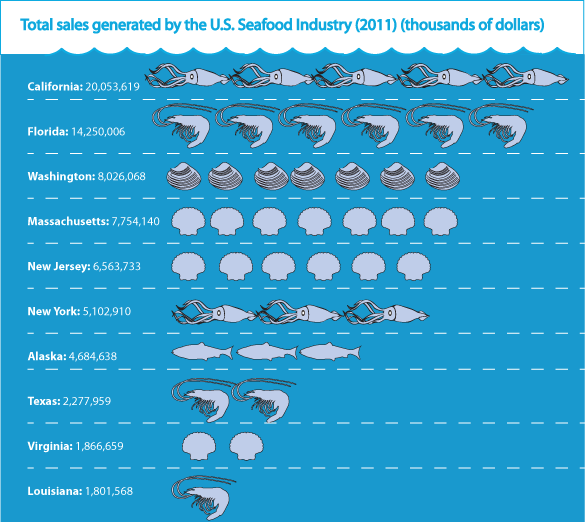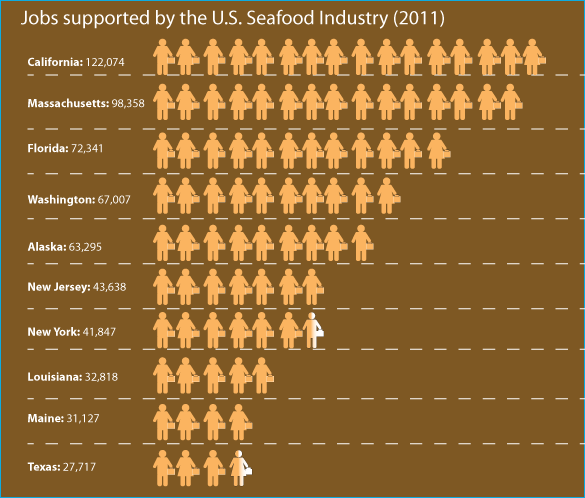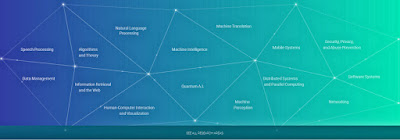What does it mean to be a native of the North American Pacific Rim, other than you can watch the Sun set over an ocean? Simply, from childhood the reflection of that sunset is a different view of the world than that experienced in the rest of America.
We of California, Oregon and Washington ought to fear the Bernie/Donald Atlantic-Eurocentric world view. Our view of our western border, the Pacific Ocean, has nothing in common with what is experienced in New York or Vermont - or even Michigan or Florida - and that difference is threatening our economic well being.
Consider this map of the world which is the perspective Americans traditionally are used to seeing from grade school on:
It is the Atlantic - Eurocentric - New York - London view of the world.
And below is the Map of the United States that creates a home "World View" for the candidates running for President in both political parties:
It is the New York/Vermont/D.C./Florida - Atlantic - Eurocentric - London view of the world, the view of the world as understood by both the traditional American "Conservative Establishment" and the revolutionaries of Donald Trump and Bernie Sanders. (If one desires to argue it is unfair to call it "Eurocentric" I would allow that the focus of this World View does at its fringes include the Middle East and parts of Africa.)
Now consider this map of the world:
It is a Pacific Rim Los Angeles - Tokyo - Shanghai view of the world.
Looking at it a little closer one should begin to get a hint of a world view different from the traditional American view:
Simply, the Far East, Oceania, the Andean States, and Central America are far more important to residents in the Pacific Rim States of North America than Europe.
Even historically this has been a grating truth.
For instance, in the 1940's being a resident of the North American Pacific Rim may have meant that your state was attacked by Japan while the focus of the American war effort was on Europe and Africa. In addition to attacks on Hawaii and Alaska, consider:
- On February 23, 1942 a Japanese submarine shelled the Ellwood Oil Field west of Goleta, near Santa Barbara, California.
- On June 20, 1942, a Japanese submarine fired shells at the Estevan Point lighthouse on Vancouver Island in British Columbia.
- On the night of June 21 and June 22, 1942, the only attack on a mainland American military installation during World War II occurred when a Japanese submarine fired shells toward Fort Stevens, which protected the Oregon side of the Columbia River's Pacific entrance.
- On September 9, 1942, the first and only aircraft attack by a foreign power on the mainland U.S. occurred when an attempt to start a forest fire was made by a Japanese seaplane dropping two incendiary bombs over Mount Emily, near Brookings, Oregon.
- Between November 1944 and April 1945, the Japanese Navy launched over 9,000 fire balloons toward North America. Six people (five children and a woman) became the only U.S. civilian deaths due to enemy action to occur on mainland America during World War II when one of the children tampered with a bomb from a balloon near Bly, Oregon and it exploded. One member of the 555th Parachute Infantry Battalion died while responding to a fire believed caused by a fire balloon on August 6, 1945.
Older residents of the Pacific Rim states are painfully aware of the internment of Japanese Americans in the United States during World War II. This was the forced relocation and incarceration into U.S. Government operated concentration camps in the interior of the country of between 110,000 and 120,000 people because of their Japanese ancestry who lived on the Pacific coast. Sixty-two percent of the internees were United States citizens with most of the remainder being legal immigrants.
In the Atlantic-oriented remainder of the United States, German-Americans were (and still are) America’s largest single national-origin ethnic group. No German American citizens living in the Atlantic States were detained though the government examined the cases of at least 11,000 German nationals individually, and a few were detained in internment camps.
These historical differences may seem irrelevant today. In 2016 being a resident of the North American Pacific Rim now means something less violent than WWII. But the differences were always potentially as important and in this election year have become divisive. Take another hard look at this map:
British Columbia in Canada, Alaska, Hawaii, Washington, Oregon, California plus all of the West Coast State of Mexico have economic ties to Japan, South Korea, China, Taiwan, the Philippines, Vietnam, Malaysia, Singapore, Thailand, Myanmar, Indonesia, Australia, New Zealand, Chile, Peru, Ecuador, Columbia, El Salvador, Guatemala, and the many others on the map.
It has to be noted that the wild card for us is North Korea which currently has nuclear warheads and missiles which can achieve these ranges:
For us, the nation of North Korea which is working on longer range missiles is the potential threat to millions of Pacific Rim lives, not some ragtag groups of Middle Easterners that seem to dominate the political discussion in this Presidential election year.
And the economic and military power People's Republic of China is of far more concern than Putin's Russia.
Beyond that, this Pacific Rim orientation has created cultural differences in addition to the awareness of Japanese-American influences.
In San Francisco about 20% of the population is Chinese-American or foreign-born Chinese immigrant. Even New York City has only 6%. Kansas City has fewer than 1%.
It's not unreasonable to expect that the population of the San Francisco Bay Area would have a stronger orientation towards Pacific Rim countries, one of which is China. China is the world's most populous nation, the world's second largest economy by nominal GDP, and the world's largest economy by purchasing power parity according to the IMF, and the world's fastest-growing major economy. In area China is 2.17 times the size of the European Union.
So it shouldn't be surprising that North America's West Coast ports handle billions of dollars in North American exports to, as well as imports from, other Pacific Rim countries.
What we understand is that with the exception of the U.S., Canada, Japan, South Korea, Singapore, Australia, and New Zealand, we would regard most of these countries as "developing" nations because of relatively low wages. But we trade with these nations. In addition to agricultural exports and imports that provide food in both directions, we export movies and tv shows and import electronics, clothing, pet supplies, etc. Those of us on the West Coast understand that the economies of the Pacific Rim nations are inextricably tied.
Enter Bernie Sanders and Donald Trump and their legions of ignorant voters, particularly those in California, Oregon and Washington who have not given one thought about the fact that New York and Vermont have no significant trade orientation to the Pacific Rim. And suddenly you have a well organized attempt to destroy the Trans-Pacific Partnership and politicians who support it.
Further, they attack the North American Free Trade Agreement (NAFTA) which added Mexico to the President Ronald Reagan negotiated Canada–United States Free Trade Agreement between the two other North American Pacific Rim nations. We who live in, and understand the history of California, consider this NAFTA attack and Donald Trump's wall ironic because of this map:
We do know about the Mexican–American War, the (Britain-founded) United States war of conquest initiated by President James K. Polk (Scottish surname) after the Father of Texas, Stephen Austin (English surname), initiated the war for Texas independence.
It is no surprise the Donald "TheWall" Trump and Bernie "I-voted-against_NAFTA" Sanders stir the historical Northern European heritage Americans hatred toward the "we-thought-they-were-conquered" Mexicans.
Essentially, this is an effort by the extreme right and extreme left to impose isolation from the Pacific Rim on California, Oregon and Washington. It is an attack on the economies of these states which, if successful, will result in a recession on the West Coast and probably the nation. Well ... not among Bernie's fellow Vermonters and Donald's fellow Manhattanites.
It is really frustrating to see this (caption can be viewed by placing your cursor on the image):
These Sanders advocates are wearing clothing and shoes affordably made in Pacific Rim countries while using iPhones and other cell phones affordably made in China. They eat affordable fruits and vegetables imported from Mexico and watch movies and TV shows that depend upon world distribution for their existence.
All of these items are imported and exported mostly through California ports where members of the International Longshore and Warehouse Union work, a labor union which primarily represents dock workers on the West Coast of the United States, Hawaii and Alaska, and in British Columbia. In San Francisco it was somewhat resentfully reported to the highly paid non-union tech community that:
The longshore union has become the aristocrat of the working class; a top member can earn over well over $100,000 a year with excellent benefits. The jobs are so good that it's almost as tough to get in the ILWU as it is to get into Stanford; thousands apply for vacancies, sometimes tens of thousands. "These are dream blue-collar jobs," said Craig Merrilees, the union's communications director.It means that these few are what's left of the blue-collar class who can afford to buy a home in the Bay Area. It is important to know this union disaffiliated from the Eastern U.S. dominated AFL-CIO on August 30, 2013. In a report on a letter to AFL-CIO President Richard Trumka, ILWU President Robert McEllrath it was explained:
“[The AFL-CIO] wants to organize these big conventions, and rally to pat themselves on the back, doing nothing to promote the working-class,” said ILWU Coast Committeeman, Leal Sundet, who supported the union’s decision to disaffiliate.But Bernie and his supporters are working hard to eliminate ILWU jobs. After all, those idiots pictured above apparently believe the economy of California located on the Pacific Rim is just like Vermont and all issues should be resolved from a Vermont point of view.
The ILWU supports a national single-payer health care system, while the AFL-CIO is “in lockstep with Obama,” Sundet said. He criticized the federation for being unwilling to discuss the shortcomings of the Affordable Care Act, which discriminates against union Taft-Hartley benefit plans and will impose a so-called “Cadillac tax” on generous benefit plans.
Sundet also chided the federation’s position on immigration reform. The AFL-CIO is backing a bill that he contends will only make things harder for working-class immigrants, because it is “designed to give [only] highly-paid workers a real path to citizenship.”
It’s clear, however, that the overriding factor in the break is fallout from the ILWU’s ongoing struggle to maintain its longstanding contract standards—and jurisdiction—for 3,000 longshore workers who handle grain along the Puget Sound and Columbia River. Sundet is in the middle of the storm, heading up grain negotiations for the union.




























